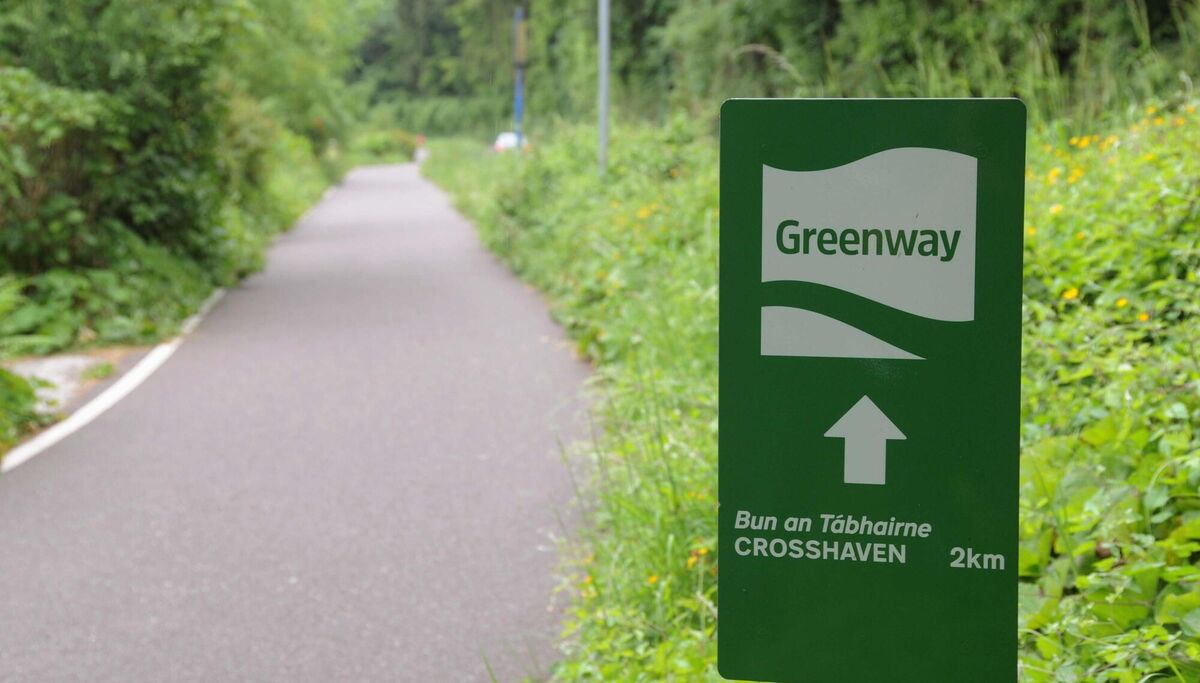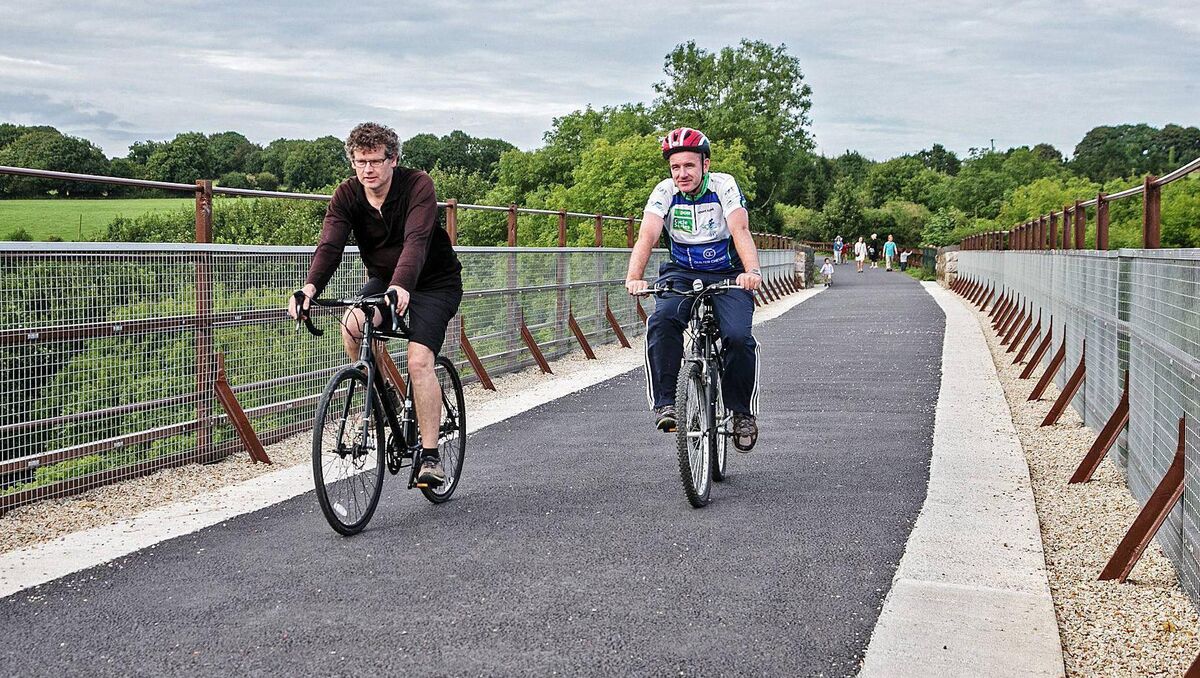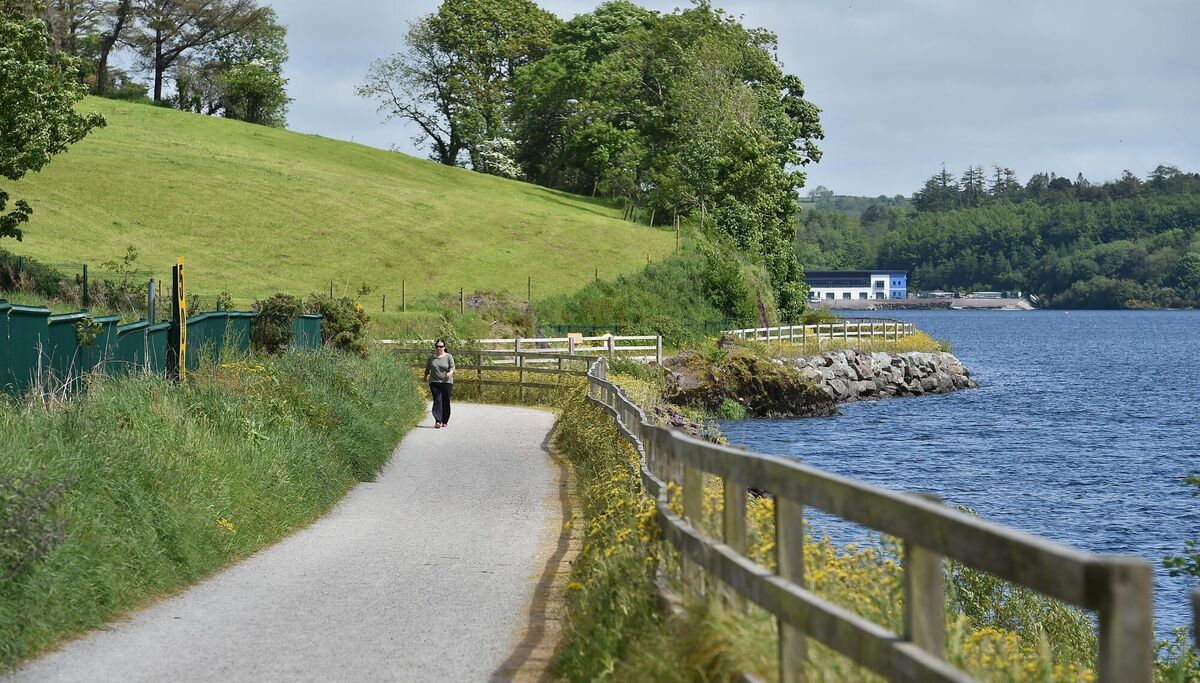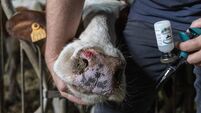Development of greenways back on track thanks to funding boost

More than 2,000 people use the Waterford Greenway every day, which opened in 2017.
American travel writer Susan Poole once noted that scarcely a thread in the rich tapestry of Irish history is missing from the Blackwater Valley in the south of Ireland.
It was a perceptive observation about the 100km-long region that begins in the rugged uplands of Sliabh Luachra, north of Ballydesmond, straddling the ancient border between Kerry and Cork.
The river rises from a clump of rushes, meanders south through soggy land towards Rathmore in Kerry, swings east along the fertile soil of north Cork and into the wooded beauty of west Waterford. It turns right at Cappoquin for the final part of its journey to meet with the sea at Youghal.
Dotted along the scenic valley of farms, racing stables and towns and villages, rich in literary and sporting heritage, are standing stones, dolmens, cairns and stone circles, all reminders of its misty beginnings.
Monastic landmarks point to early saints and scholars and ruined castles are silent reminders of successive invaders and battles long forgotten.
A letter writer to this newspaper in July 1926 noted that the river, often hailed as the Irish Rhine, was full of beauty, bordered by the woods of many parks and the gardens of mansions including Lismore Castle perched in west Waterford.
Some of those scenic views were opened to the public in 1849 when a rail line from Mallow to Waterford via Fermoy, Lismore and Dungarvan was built and operated by the Great Western and Southern Railway. It continued until 1967 when it was closed.

Councillor Deirdre O’Brien, who sought a progress report on the issue at a council meeting in Mallow in 2017, was told a preliminary feasibility assessment had been undertaken on elements of the overall route, but complications had arisen.
Farmers were apparently previously allowed to buy parts of the defunct railway line on the Cork side. Permissions to allow a right of way into the land they now own would be required. However, the corridor in Co Waterford was stated to have remained in public ownership.
The proposal is now back on the agenda after Transport, Tourism and Sport Minister Eamon Ryan announced funding of €4.5m to 26 greenway projects countrywide under the Carbon Tax Fund 2020 for feasibility, planning and design works.
He said the funding will help local authorities prepare greenway projects to be ready for construction in the coming years to encourage tourism in the future and to provide a safe, segregated space for people walking and cycling.
A total of €80,000 was approved for Cork County Council to conduct a feasibility study for a 39.15km section from Mallow/Youghal to Ballyduff on the Waterford border, with a further €80,000 approved for Waterford City and County Council for an appraisal of options relating to a 38.5km extension of the existing greenway from Dungarvan to the Cork county boundary west of Ballyduff Upper.
Waterford’s existing award-winning greenway, which was opened in 2017, already has a particularly strong appeal to visitors, both domestic and overseas. This reflects a rise in the popularity of walking and cycling holidays as emerging consumer trends point towards good health, well-being and outdoor activity.
Some 283,503 people visited the greenway in 2018.

Greenways, now a feature in many parts of the country, are predominantly traffic-free paths, designated for use by pedestrians, cyclists, and other non-motorised users, such as wheelchair users, families with buggies and are wide enough to accommodate shared usage.
Welcoming the recent funding announcement, Labour party spokesperson on community and rural development, Seán Sherlock TD, said the feasibility study for a Mallow to Dungarvan Greenway is the first step towards opening-up the North Cork region. The economic and leisure benefit of such projects had been proven with the success of the Waterford Greenway, a 46km long route.

It is possible to see once-derelict villages now thriving.
Kilmacthomas in Co Waterford was dead but now it has no derelict buildings and 30 people are working in the local café.
“More than 2,000 people use the Waterford Greenway every day. The value of this type of tourism is evident because people who come on a bike spend four times more money than someone who comes in a car and at least 20 times more than people who come down on buses.
“It also spreads out the benefits to the wider area. In Co Clare, for instance, 1.2m visitors could be coming to the Cliffs of Moher, while Miltown Malbay, Corofin and Kilfenora may be struggling. That is not the case, however, with a greenway, where every town and village along the route benefits,” she said.
Speaking in the Senate, she said Greenways do not have to stick to the straight lines of the old railways. It is always good to have a bit of meandering and the first people that need to be engaged with in that context are the farmers.
“We must ensure that they will have full indemnity and proper fencing, and then farmers will see the benefits that will accrue to them from greenways, including keeping young people on the farms. That is very important for us in rural Ireland,” Ms Garvey said.










